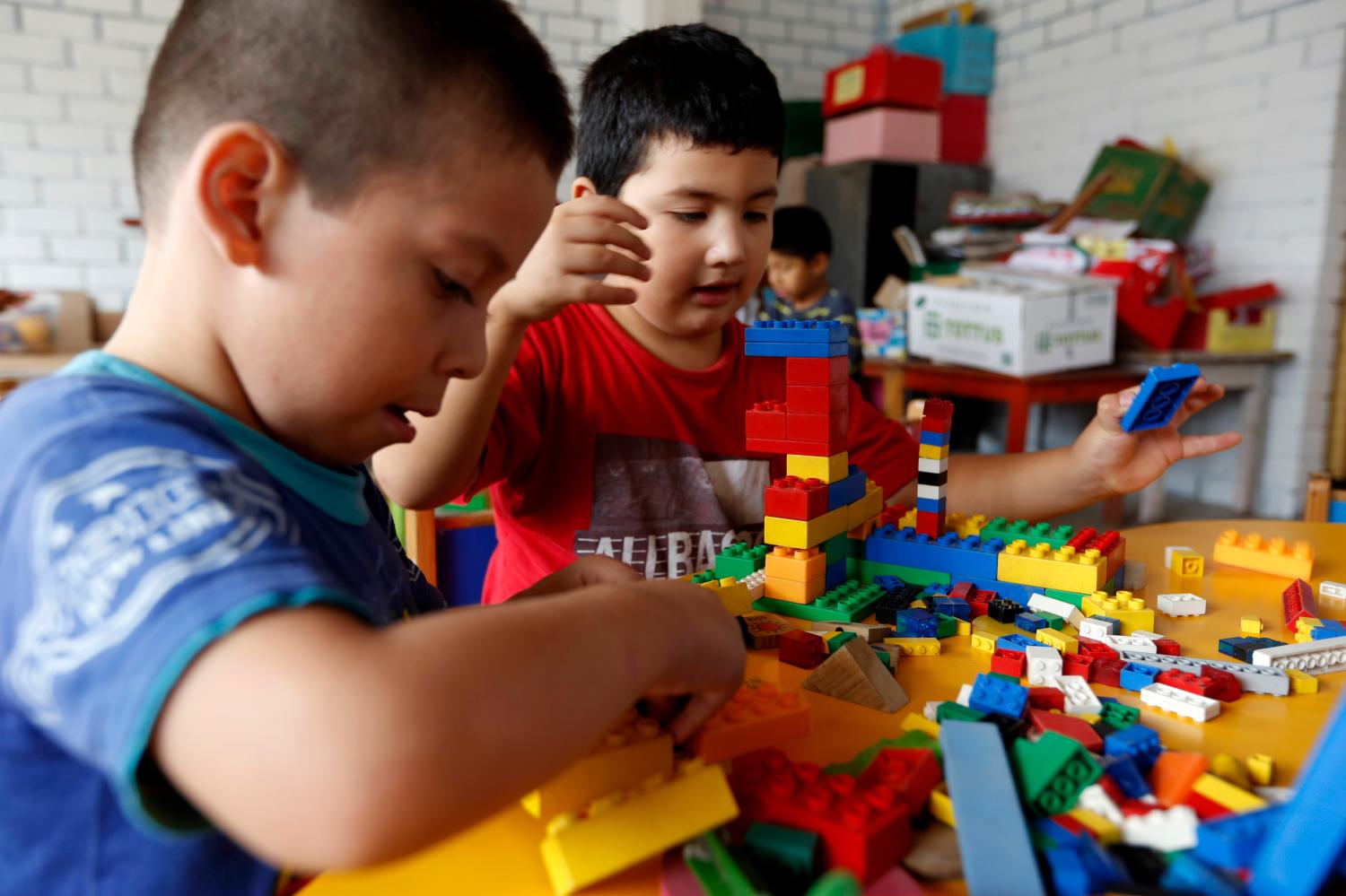It is incontestable that the well-being of today’s children and youth will determine the future of the planet. For young people to develop and thrive, sound investments must be made across multiple sectors including health, nutrition, social protection, and education. The COVID-19 pandemic has both hampered progress toward meeting the sustainable development goals (SDGs) related to children and youth and highlighted the interconnectedness across these sectors. Pandemic-related setbacks have been observed in child and youth-centered targets in several domains including health (SDG 3), education (SDG 4), gender equality (SDG 5), and economic growth (SDG 8). UNESCO estimates that there are 244 million children and youth out-of-school, and progress at lowering this rate had already stalled before the pandemic (Global Education Monitoring Report Team and UNESCO Institute for Statistics, 2022)1. In just three years, learning poverty jumped from an already unacceptable level of 57 percent of 10-year-olds in low- and middle-income countries unable to read and comprehend a simple text in 2019 to 70 percent in 2022 (World Bank et al., 2022). Further complicating this is the fact that of the $5 trillion spent yearly around the globe on education, a mere 0.5 percent is spent in low-income countries while two-thirds is spent in the wealthiest nations (UNESCO, n.d.). And while improvements have been made in child malnutrition since the beginning of the century, in 2022 nearly a quarter of children under 5 (22.3 percent) were stunted (UNICEF, 2023). Almost half of all deaths of children under five are due to malnutrition, and those that survive chronic malnutrition in their childhood can be impacted for life. Stunted children are less likely to achieve in school, have diminished ability to learn, and are less likely to attain formal employment (UNICEF, 2023; Oot et al., 2016).
To address the learning crisis and other challenges facing children and youth (those 15-24 years of age) it is critical for governments, multilateral and bilateral funders, other donors, and implementers to have a clear understanding of program costs and cost breakdowns to inform financing decisions. The World Bank pointedly notes that “countries should develop and cost evidence-based plans for achieving their learning goals and a road map for financing those plans” to improve outcomes (Arias and Kheyfets, 2023, emphasis added). Cost data are a critical component of cost-effectiveness analysis, which is imperative to ensuring the best use of limited resources. Indeed, cost data are needed for advocacy, budgeting and planning, and resource allocation in all sectors. While cost is not the only factor to consider, it is a critical one that is often overlooked due to such issues as a lack of accessible high-quality cost data, low capacity to conduct cost analysis, an aversion to transparency, or simply low prioritization of data collection and analysis. Several studies have shown that even at the highest levels, most evaluations of programs and initiatives do not include cost data analysis (Brown & Tanner, 2019; Velez, 2020).
For nearly a decade, the Center for Universal Education (CUE) at the Brookings Institution has led the Childhood Cost Data initiative, a research project focused on the collection, analysis, and use of cost data to increase the volume and quality of funding for programs targeting children and youth. The initiative’s end goal is to improve learning and life outcomes for the youngest generation through these advancements. As part of this initiative, Brookings developed the Childhood Cost Calculator (C3), intended to facilitate cost analysis. This study introduces C3, the tool’s various dimensions and functionalities, and presents learnings from three case studies from piloting the calculator in the 3 education or early childhood development (ECD) sectors in Cambodia, Ghana, and Honduras. It concludes with suggestions for a way forward that supports funders, implementers, and researchers to better use cost data to make strides in tackling the multiple crises facing children and youth today.
History of the Childhood Cost Data initiative at Brookings
In 2014, CUE began conducting research specifically focused on the cost of delivering quality ECD interventions in low- and middle-income countries. The goal was to inform policymakers on the average costs of delivering ECD services in each country so that this information could be used for advocacy, budgeting, planning, and the implementation of quality ECD programming. The team rapidly discovered that the data were scarce and that where data did exist, they were not comparable due to methodological inconsistencies in their estimation due to the variation in costing models used. Additionally, there were no publicly available costing tools focusing on programming for young children across a variety of sectors. Furthermore, it became apparent that while there was a high demand for cost data among some actors, capacity and political constraints were hampering their collection. Finally, the research uncovered the fact that costing has primarily been driven by funders and researchers external to the programs and countries themselves, failing to strengthen capacity on the ground and allow for ownership of the data (Manuelyan Atinc et al., 2014; Putcha and Van der Gaag, 2015).
To attempt to address these gaps and challenges, CUE developed the Standardized ECD Costing Tool (SECT) aimed at providing quality cost data with methodological consistency for a range of ECD interventions across a diversity of contexts which could then be used by policymakers, funders, program implementers, and researchers to inform effective investment decisions. Through piloting the tool in five countries (Bangladesh, Malawi, Mali, Mexico, and Mozambique), in partnership with the World Bank’s Strategic Impact Evaluation Fund, the team and partners learned a great deal about the challenges and limitations of costing. These challenges included difficulties in accessing cost data, defining cost categories, and making cost assumptions, to name a few. Additionally, the piloting uncovered that the SECT tool itself was not sufficiently user-friendly for it to be used independently by non-expert users (Gustafsson-Wright et al., 2017). The tool had not addressed the failings of other tools in the sector in terms of accessibility. These learnings informed the design of the Brookings Childhood Cost Calculator (C3), a revised, more user-friendly, and publicly accessible tool to replace SECT which was expanded to include a variety of interventions targeting children and youth across multiple sectors (Education, Health, Nutrition, Social Protection, Water and Sanitation, and Governance).
While Brookings worked to develop, pilot, and refine C3, the global development community continued to make further strides in costing including through a few guidance documents and tools, as seen in Appendix A1. Each of these guidance documents and tools will be an important part of a larger effort to increase the quality and quantity of various types of cost data globally by supporting different needs, populations, and contexts as well as varying levels of capacity. However, many of the currently available tools require significant training prior to their use or an external expert consultant, are developed and targeted to either specific intervention types or populations (such as the EiE Cost Capture Template,) or must be used mainly within or by a specific organization (such as the USAID Education Cost Analysis Guidance and Templates). In addition to these guidance documents and tools, our research also 4 uncovered a systematic review of older tools specific to the health sector as well as additional earlier costing models within the ECD sector that current work builds upon (Bitran y Asociados and PATH, 2008; Gustafsson-Wright and Boggild-Jones, 2018). C3 makes an important contribution as a user-friendly free public good that goes beyond a single sector to encompass a range of child and youth-centered interventions, allowing for improved comparison and consistency without the requirement of an economist or an outside expert.
The Childhood Cost Calculator
C3 was built on RTI International’s Tangerine software platform which allows the user to enter costrelated data in a straightforward survey form. The tool, which can be accessed freely online, can provide a range of calculations, estimates, and simulated costs for prospective, concurrent, and retrospective cost analysis for a variety of interventions targeting children and youth across multiple sectors. It includes functionalities such as currency conversions and provides outputs such as automatic data visualizations of aggregated data and disaggregated data downloadable in CSV format. The disaggregated data are stored on a secure server only accessible to the individual conducting the data entry. As can be seen in Figure 1, the process for engaging with C3 is simple. Optional steps include the establishment of a group of enabling stakeholders to engage in the costing process and more detailed analysis of the disaggregated data.
-
Footnotes
- Please see complete report for full list of references.
The Brookings Institution is committed to quality, independence, and impact.
We are supported by a diverse array of funders. In line with our values and policies, each Brookings publication represents the sole views of its author(s).















